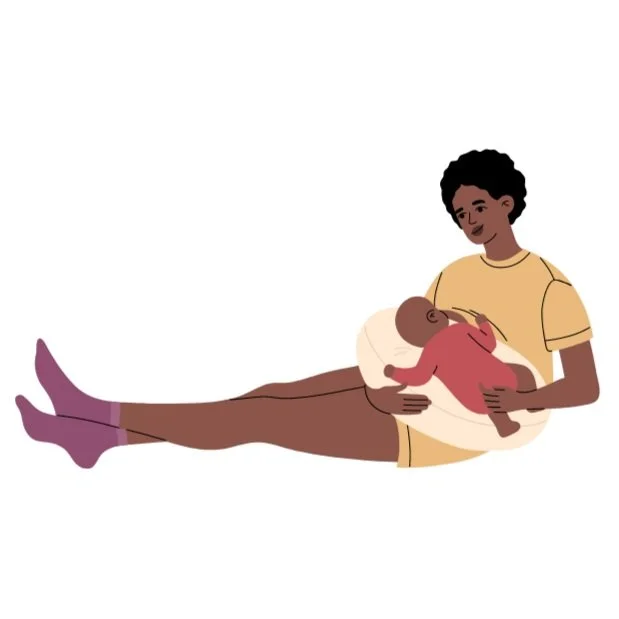7 positions for breastfeeding or chest feeding
Reclined or laid back Hold
Laid-back breastfeeding or reclined position first one you will probably try. This is the position where you are reclined and baby is on your chest or tummy.
In the first few moments of life, after being born, during skin to skin your baby will instinctively do the breast crawl; and this is the position you will be in. To replicate it at home be sure to position yourself atop lots of pillows behind your back, under your arms and neck—and fully sink into into them. You might be stuck in this position for a minute—or 20.
Cradle Hold
The classic position we all see the pictures of. You are sitting up, baby is on their side positioned across your lap, but your arm cradles them into the right position.
Their head rests on the fold of your elbow.
Football hold
In this position you are upright, but instead of baby laying across your lap, their body is positioned on either side of you.
They are tucked into your arm, like a little football; toes toward your spine. this position gets harder as they grow longer, but is a great option.
Side-lying Position
The most relaxed position of them all. You lay belly to belly next to baby. You on your side, them on theirs in bed, on the sofa or floor.
My favorite position of them all, because if there’s one thing I don’t get enough of it’s rest, and this position lets everyone involved relax, maybe even drift off to sleep.
Upright Position
This one is for the babes that can sit up unaided. Some times you need you can’t recline, or rest into a mountain of pillows, but you can still make the most of your milk wherever you may be.
Dangle position
This one is probably the most uncomfortable for the person on the giving end of this transaction. It involves hovering over baby and dangling the nip into their mouth from above. This one is good for when you need more control, to get a deep latch. Tradeoffs are it will hurt your back to position yourself like this for too long.
PRO TIPS
I struggled with getting a good latch in the early days. My lactation consultant shared a few tips that were helpful to me
Sandwich Hand
Large breasts are hard for tiny mouths to wrap their lips around. You can help baby get a good latch, and yourself by using your free hand to create flat planes at the top and bottom of your round curve. You want to grip the top and bottom—or sides—depending on the hold you’re using to help baby fit their mouth around their meal source; like a sandwich.
SHIMMY
Giving the girls a shakes before feeding helps the fats roll off your milk ducts, making your milk even more nutrient dense. Plus it’s kinda fun—give it a go!
KEEPING UP SUPPLY
Keeping up supply is 90% about staying hydrated. Eating the right foods and resting is also important, but drinking loads of fluids and staying hydrated makes milk, well, flow. For variety in your fluids and an herbal tonic that boosts the supply of nutrients available try our Milk Made Tea.
Weigh baby before feeding and after
It’s hard to know if baby is getting enough milk, when bodyfeeding. Us parents get to worry if they’re eating enough for probably for the rest of our lives. You can measure how much milk they’re getting, by weighing baby before feeding—recording their weight—and again after feeding. Subtract the last number, from the first one and the difference is how much your baby just ate. Keep track with our trusty log, inside our 4th Trimester Guide.
Check out the bodyfeeding checklist below for a short list of materials to ease getting started.






